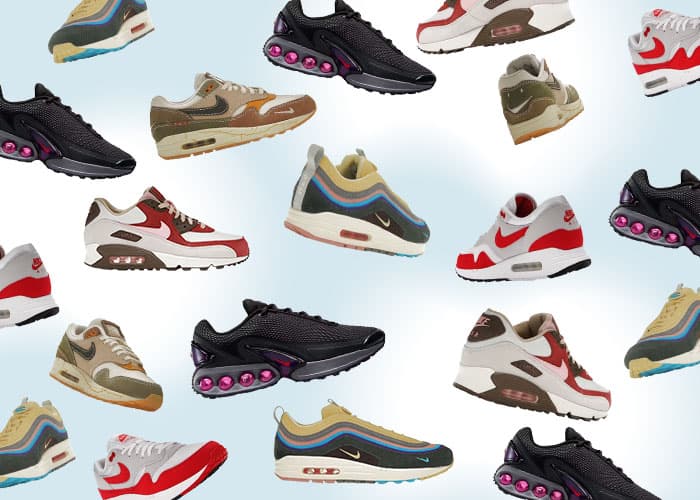It’s not every day that we have the opportunity to chat with a pioneer of hip-hop in France. Uncle Tex saw the birth of the movement in the capital in the early 80s and, since then, he’s been among the activist entrepreneurs of culture as founder and director of pioneering institutions of hip-hop, a graffiti artist, a DJ, an author and even a marketing consultant!

Uncle Tex, Marketing Consultant and pioneer of hip-hop in France – Photo credit: @swelly_x on Instagram
A look back at 50 years of passion, activism and entrepreneurship with the man we call Uncle T… S/O Wings & Chill (70 Rue Alexandre Dumas, 75011 Paris) for the welcome!
Herbby: What is your first memory of hip-hop?
Uncle Tex: Rapper’s Delight by The Sugarhill Gang, but at the time, I didn’t know it was hip-hop! It came out in 1979. I was in college and for us, it was just guys talking over a funk beat.
Q: What medium did you start with at the time?
UT: I started with graffiti and dance. That’s what I liked the most, I never wanted to be a rapper, I always wanted to be in the background. When you’re a graffiti artist, you’re not seen and with dance, my mother was a dance teacher so I always liked to dance. I started dancing to funk and then switched to hip-hop.

On set with Uncle Tex at Wings & Chill – Photo credit: @swelly_x on Instagram
H: In 1990, you launched and managed GET BUSY: the first hip-hop magazine in France! Tell us a bit about the origins of the project. How was it received when it came out?
UT: In 1990, there were gang wars in Paris and the press had associated each neighborhood with a rap group, like Vitry and Little MC, Saint-Denis and NTM, etc. The same year, Public Enemy came and had a concert at the Zenith and the event caused controversy in the press, again, with headlines like: “The Scandal of the Anti-White Concert at the Zenith”… I’ve kept all those articles. As a result, we were tired of not having a voice and seeing our story told by the mainstream press or the specialized rock press that didn’t like rap.
Since I’d frequented the alternative rock scene, I had this culture of do it yourself. I was very close to the IZB group, which organized the first big rap concerts in France at the end of the 80s. They put me in touch with their guy Sear who had the same idea, we spoke and then we launched the magazine. We did everything by hand. At that time there were no computers, so we typed up all the articles. We photocopied the first issue… We got student cards to get cheaper photocopies and then stapled it by hand! We thought that no one would want to pay even 2 Francs to buy it so we distributed it on the evening of the Fête de la Musique, June 21, 1990, during the launch party of Rapattitude, the first compilation of French rap. We knew it was going to be beautiful and, in the end, everyone loved it!
As a result, we followed up by releasing the first issue of “Le Vrai” for 3 Francs. We sold it by hand and passed it out to the few hip-hop shops of the time like Ticaret. We created a whole network of activists in the provinces who had associations or radio shows, who we sent the magazine to in batches of 10 and they sent us the money after… 100% on our own!

On set with Uncle Tex at Wings & Chill – Photo credit: @swelly_x on Instagram
H: Four years later, in 1994, you set up WICKED: the first street marketing agency in France with high-end clients like Def Jam, Bad Boy Records, Sony Music, Loud Records, Warner Music, Rawkus Records… Tell us a bit about this experience in the heart of the industry.
UT: I stayed at GET BUSY until 1993 and then went to Switzerland for a year to work with Sens Unik, one of the three biggest hip-hop bands there. They’d set up their own label, there were two of us to manage and in one year, I learned everything about business because we did everything: production, execution, marketing, distribution, concerts, tours, etc., while also managing Fabe and LSO.
Following this, my buddy Como Chantrel, who’s not very well known but who’s super important in the history of hip-hop in France, went to the US to work with Russell Simmons, shortly after he launched Rush Management. He worked for him for a year or two and then met Steve Rifkind who was about to set up Loud Records. I was still in Switzerland, and he was telling me about Loud, telling me that it was heavy, that I should come, etc. I knew Steve Rifkind’s father was the founder of Spring Records, who’d released the real first rap record before The Sugarhill Gang, The Fatback Band, on a B-side. And Steve had launched the street marketing company, SRC, that gave him the idea to create Loud in the early 90s. So, I joined my buddy in New York, I did three months at Loud, and I absorbed everything I saw there!

Air Max2 CB ’94 “White/Purple-Black” on my feet – Photo credit: @swelly_x on Instagram
I came back to France, Skyrock wasn’t yet first in rap, the magazine L’Affiche talked about world music and wasn’t specializing in rap yet. We had to release Fabe and LSO records, so we put together WICKED and when they signed their contract, we set aside a budget for street marketing. The operation worked and from then on, all the French labels started calling me for their album releases! For my part, I continued to go back and forth to the US for my contacts and I made deals with labels to release US rap albums in France because at the time, not all Kainrys albums were necessarily released here. Then I made a double deal: the Americans sent me the promos of everything that came out, we tested them with the French DJs, we went back to the French record companies with all the projects that could work here, and they budgeted for street marketing, in addition to all the French rap albums. And then, at the end of the 90s, we started to be approached by brands outside of music like Nike, Coca-Cola, EA Sports…
Basically, our know-how was we could reach young urban people, something that multinationals didn’t know how to do. So, everything that a young urban could consume, we could market it to brands. We even worked for Intervilles! (laughs)

Peace, Love, Unity and Having Fun with Uncle Tex at Wings & Chill – Photo credit: @swelly_x on Instagram
H: Staying in the world of dance, you’re part of the famous Funky French League which is a crew of DJs and producers united by their love of groove and funk. Can you elaborate on the influence of these two styles in the world of music?
UT: If there’d been no funk, there would’ve been no hip-hop. Disco and funk date back to the 70s and they influenced the development of hip-hop and house. House music founder Frankie Knuckles was a New York DJ who moved to Chicago and played old disco tracks remixed at a club called The Warehouse! Groove and funk are the basis of 90% of today’s music.

Uncle Tex, Marketing Consultant and pioneer of hip-hop in France – Photo credit: @swelly_x on Instagram
H: Today, you’re a marketing consultant for various brands like Ralph Lauren, Bleu de Paname and even French Deal. What’s your job? At what levels does your experience in street marketing in the early 90s help you excel in marketing 30 years later?
UT: For brands like Ralph Lauren, I’m their “urban decoder.” I help them get into the urban world, collaborate with consistent and relevant ambassadors, and carry out genuine operations. With BDP and French Deal, the founders are from the movement, so I work with them on their global strategy and execution at the operational level. Since I didn’t study marketing at all, I had to basically be a history teacher! (laughs) I have no ideas or knowledge of theoretical marketing, but I learned everything on the job. It’s thanks to all my experience in street marketing since the early 90s that I became a marketing consultant.

On set with Uncle Tex at Wings & Chill – Photo credit: @swelly_x on Instagram
H: Another hat you wear is that of one of the authors of the book Hip-Hop Culture published by Larousse, with François Gautret and Comer. What’s in this book? How do you define hip-hop culture?
UT: This is my second book with Larousse, after Street Style with Uncle Gibs and Tekki Latex. Larousse’s guideline for this book was that it should be readable by people between the ages of 7 and 77. This isn’t just a book for specialists. We tried to trace the 50 years of hip-hop in the US and France, using an accessible and intergenerational popularization book covering all mediums.
For me, hip-hop is a multimedia culture. I’d even say it was the last culture that appeared in the twentieth century, with graphic art, lyrical art, body art and DJing. Kool Herc and the hip-hop DJs have defined all the bases of this medium that have been taken up by other musical styles, like techno. Before, disco DJs were just “beatmatching” to mix in time and hip-hop DJs invented the “crossfader”, the passes, the “phasing”… Hip-hop was born as a counterculture and 50 years later, it’s pop culture!

Sample of Air Force 1 worn by Uncle Tex – Photo credit: @swelly_x on Instagram
H: What can we expect from Uncle Tex in the coming months?
UT: So, no new book this year… (laughs) With the Funky French League, we just released the compilation Frenchy but Funky at Warner and we’re going to follow up with other record releases by the end of the year. Otherwise, we recently launched a big event at Le Mazette, called Upside Down, in collaboration with the Osoul group, every two weeks from April 19 to September 20, focused on dance!

On set with Uncle Tex at Wings & Chill (70 Rue Alexandre Dumas, 75011 Paris) – Photo credit: @swelly_x on Instagram




















